John M. Wandeto
Spatiotemporal modeling of grip forces captures proficiency in manual robot control
Mar 03, 2023



Abstract:This paper builds on our previous work by exploiting Artificial Intelligence to predict individual grip force variability in manual robot control. Grip forces were recorded from various loci in the dominant and non dominant hands of individuals by means of wearable wireless sensor technology. Statistical analyses bring to the fore skill specific temporal variations in thousands of grip forces of a complete novice and a highly proficient expert in manual robot control. A brain inspired neural network model that uses the output metric of a Self Organizing Map with unsupervised winner take all learning was run on the sensor output from both hands of each user. The neural network metric expresses the difference between an input representation and its model representation at any given moment in time t and reliably captures the differences between novice and expert performance in terms of grip force variability.Functionally motivated spatiotemporal analysis of individual average grip forces, computed for time windows of constant size in the output of a restricted amount of task-relevant sensors in the dominant (preferred) hand, reveal finger-specific synergies reflecting robotic task skill. The analyses lead the way towards grip force monitoring in real time to permit tracking task skill evolution in trainees, or identify individual proficiency levels in human robot interaction in environmental contexts of high sensory uncertainty. Parsimonious Artificial Intelligence (AI) assistance will contribute to the outcome of new types of surgery, in particular single-port approaches such as NOTES (Natural Orifice Transluminal Endoscopic Surgery) and SILS (Single Incision Laparoscopic Surgery).
Surgical task expertise detected by a self-organizing neural network map
Jun 03, 2021
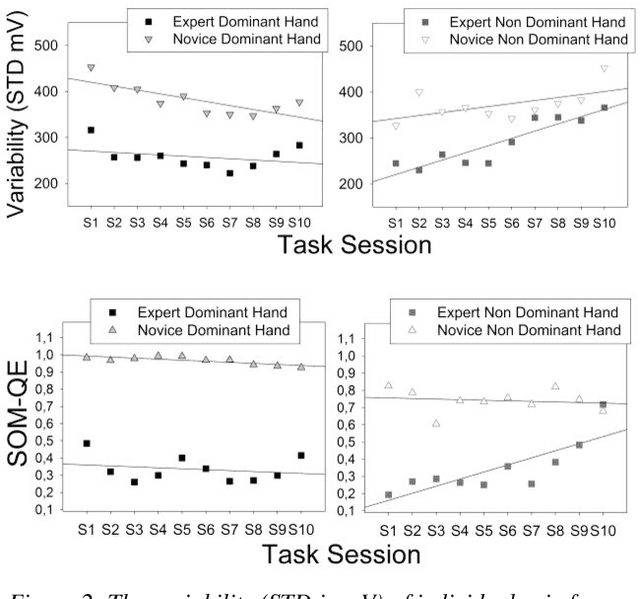
Abstract:Individual grip force profiling of bimanual simulator task performance of experts and novices using a robotic control device designed for endoscopic surgery permits defining benchmark criteria that tell true expert task skills from the skills of novices or trainee surgeons. Grip force variability in a true expert and a complete novice executing a robot assisted surgical simulator task reveal statistically significant differences as a function of task expertise. Here we show that the skill specific differences in local grip forces are predicted by the output metric of a Self Organizing neural network Map (SOM) with a bio inspired functional architecture that maps the functional connectivity of somatosensory neural networks in the primate brain.
Pixel precise unsupervised detection of viral particle proliferation in cellular imaging data
Nov 10, 2020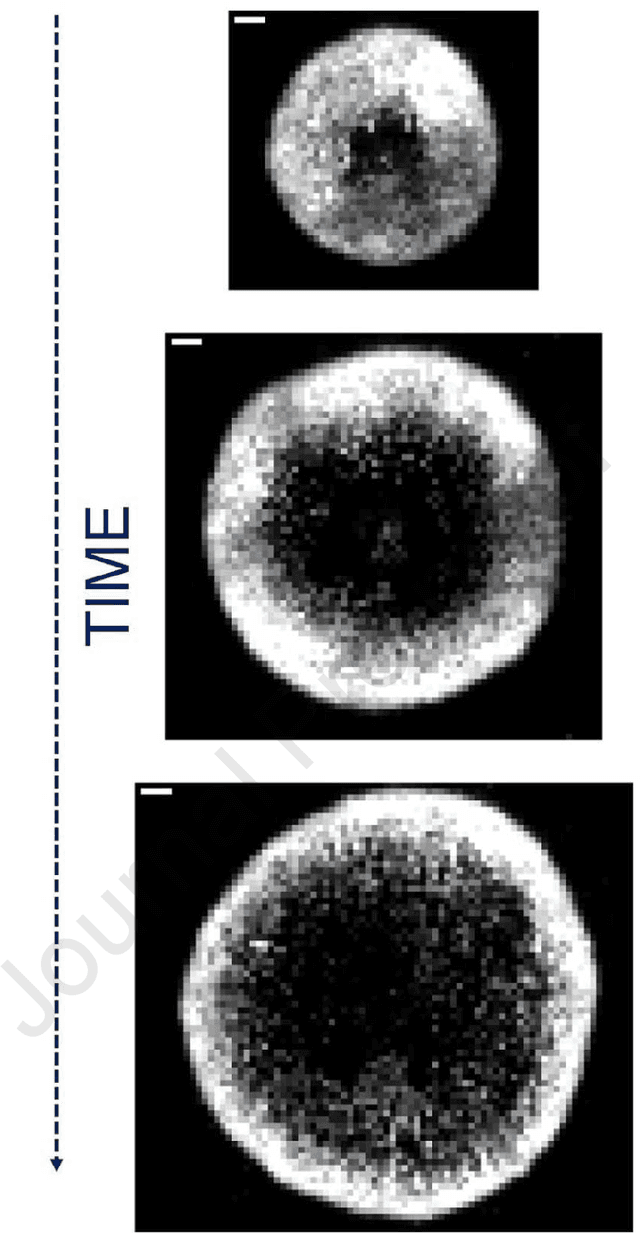
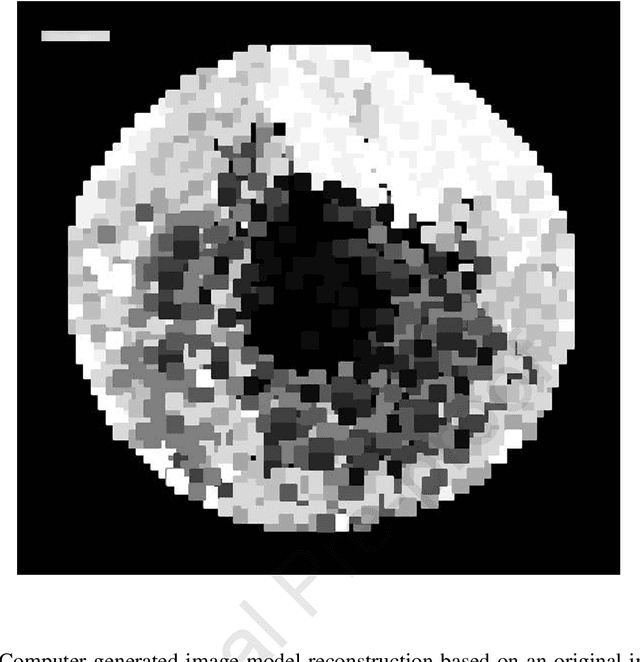
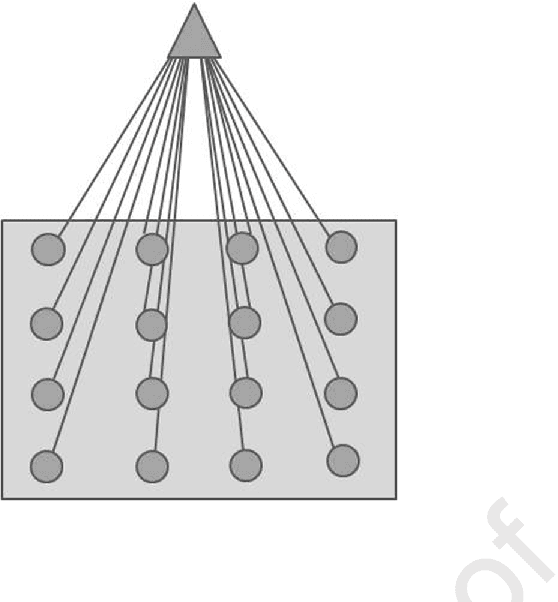
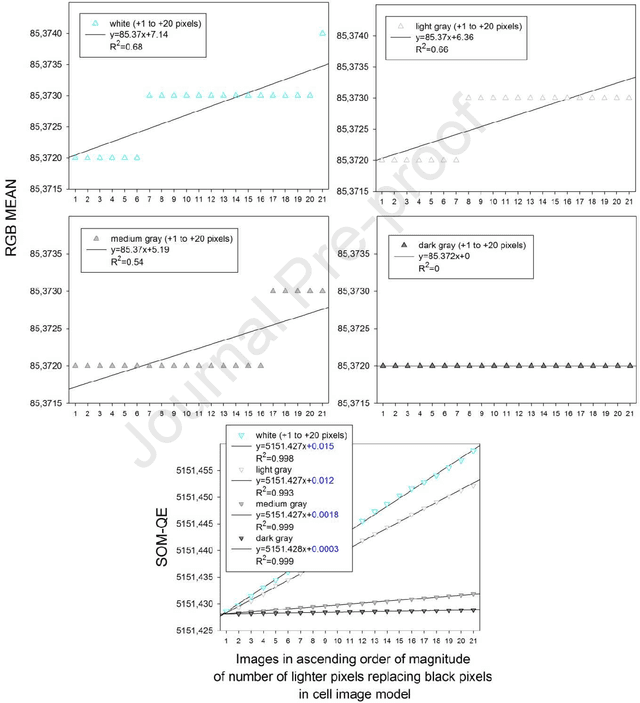
Abstract:Cellular and molecular imaging techniques and models have been developed to characterize single stages of viral proliferation after focal infection of cells in vitro. The fast and automatic classification of cell imaging data may prove helpful prior to any further comparison of representative experimental data to mathematical models of viral propagation in host cells. Here, we use computer generated images drawn from a reproduction of an imaging model from a previously published study of experimentally obtained cell imaging data representing progressive viral particle proliferation in host cell monolayers. Inspired by experimental time-based imaging data, here in this study viral particle increase in time is simulated by a one-by-one increase, across images, in black or gray single pixels representing dead or partially infected cells, and hypothetical remission by a one-by-one increase in white pixels coding for living cells in the original image model. The image simulations are submitted to unsupervised learning by a Self-Organizing Map (SOM) and the Quantization Error in the SOM output (SOM-QE) is used for automatic classification of the image simulations as a function of the represented extent of viral particle proliferation or cell recovery. Unsupervised classification by SOM-QE of 160 model images, each with more than three million pixels, is shown to provide a statistically reliable, pixel precise, and fast classification model that outperforms human computer-assisted image classification by RGB image mean computation. The automatic classification procedure proposed here provides a powerful approach to understand finely tuned mechanisms in the infection and proliferation of virus in cell lines in vitro or other cells.
Unsupervised automatic classification of Scanning Electron Microscopy (SEM) images of CD4+ cells with varying extent of HIV virion infection
Apr 30, 2019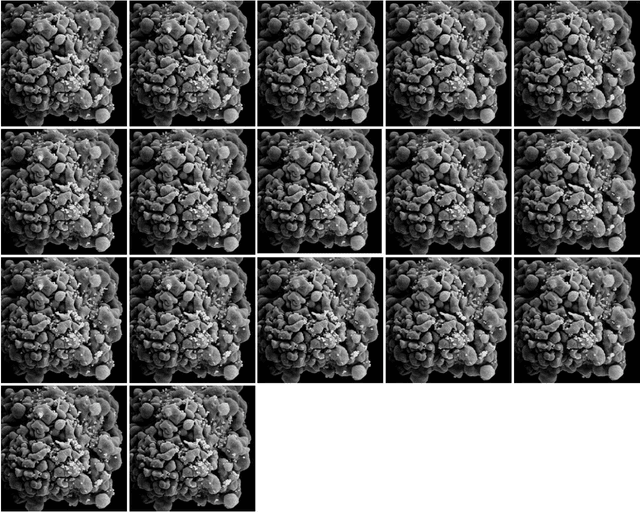
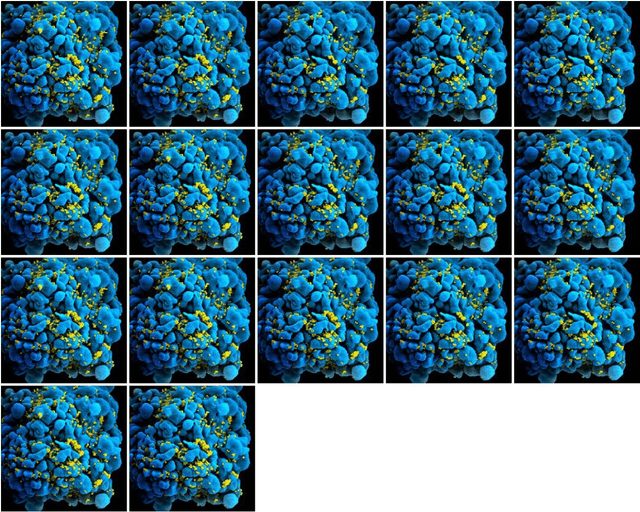
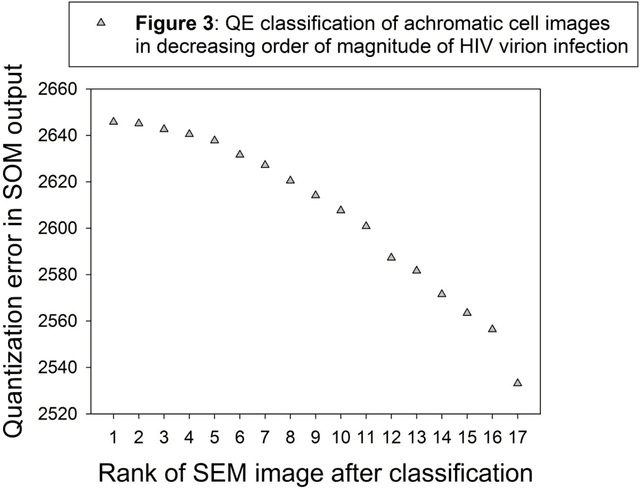
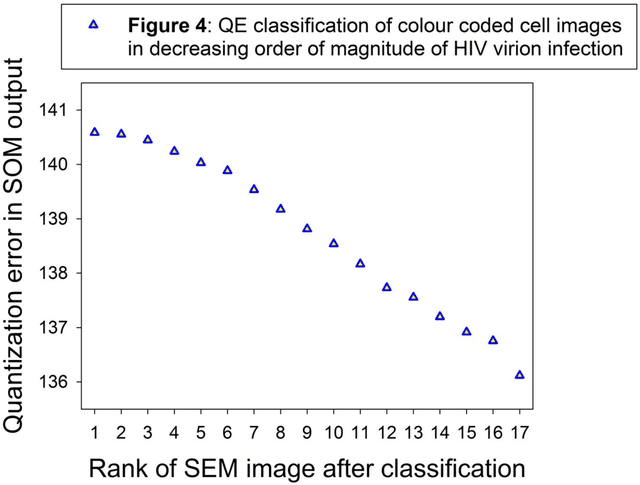
Abstract:Archiving large sets of medical or cell images in digital libraries may require ordering randomly scattered sets of image data according to specific criteria, such as the spatial extent of a specific local color or contrast content that reveals different meaningful states of a physiological structure, tissue, or cell in a certain order, indicating progression or recession of a pathology, or the progressive response of a cell structure to treatment. Here we used a Self Organized Map (SOM)-based, fully automatic and unsupervised, classification procedure described in our earlier work and applied it to sets of minimally processed grayscale and/or color processed Scanning Electron Microscopy (SEM) images of CD4+ T-lymphocytes (so-called helper cells) with varying extent of HIV virion infection. It is shown that the quantization error in the SOM output after training permits to scale the spatial magnitude and the direction of change (+ or -) in local pixel contrast or color across images of a series with a reliability that exceeds that of any human expert. The procedure is easily implemented and fast, and represents a promising step towards low-cost automatic digital image archiving with minimal intervention of a human operator.
Detection of Structural Change in Geographic Regions of Interest by Self Organized Mapping: Las Vegas City and Lake Mead across the Years
Mar 29, 2018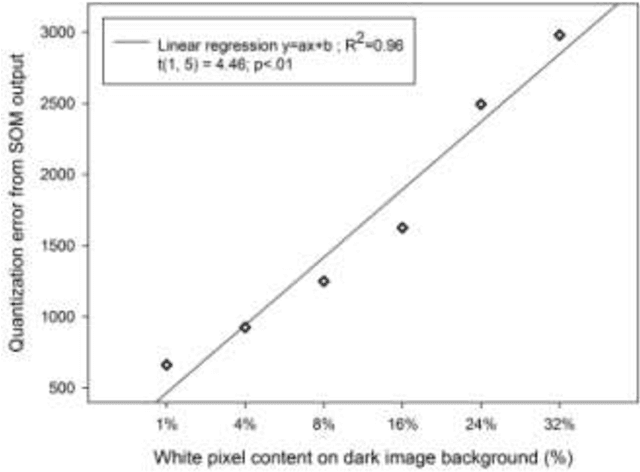
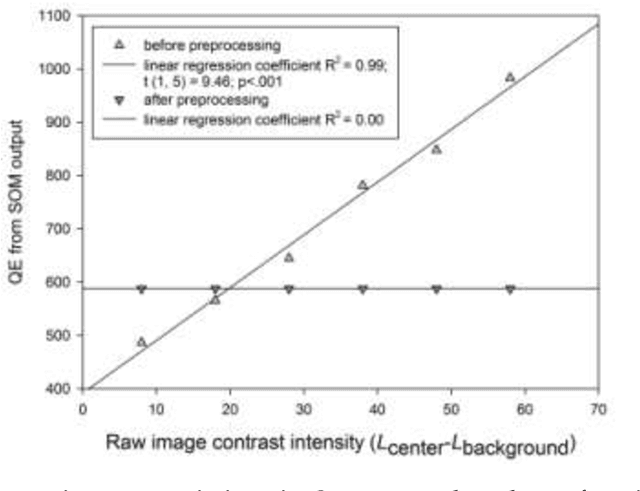

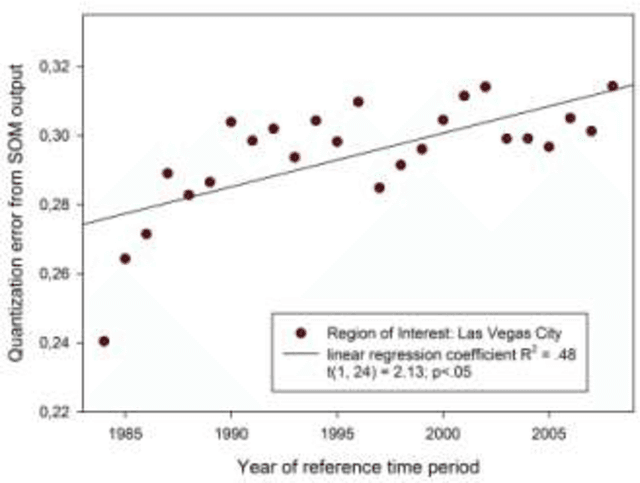
Abstract:Time-series of satellite images may reveal important data about changes in environmental conditions and natural or urban landscape structures that are of potential interest to citizens, historians, or policymakers. We applied a fast method of image analysis using Self Organized Maps (SOM) and, more specifically, the quantization error (QE), for the visualization of critical changes in satellite images of Las Vegas, generated across the years 1984-2008, a period of major restructuration of the urban landscape. As shown in our previous work, the QE from the SOM output is a reliable measure of variability in local image contents. In the present work, we use statistical trend analysis to show how the QE from SOM run on specific geographic regions of interest extracted from satellite images can be exploited to detect both the magnitude and the direction of structural change across time at a glance. Significantly correlated demographic data for the same reference time period are highlighted. The approach is fast and reliable, and can be implemented for the rapid detection of potentially critical changes in time series of large bodies of image data.
 Add to Chrome
Add to Chrome Add to Firefox
Add to Firefox Add to Edge
Add to Edge